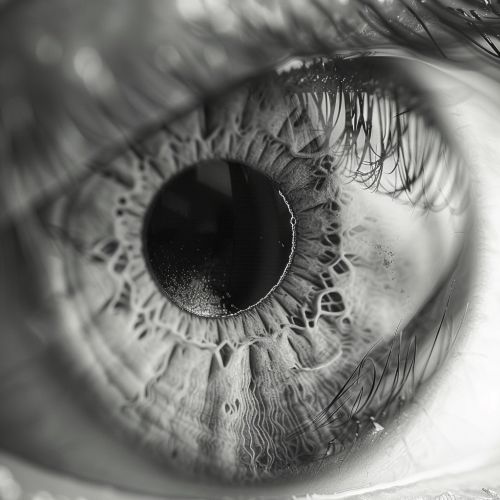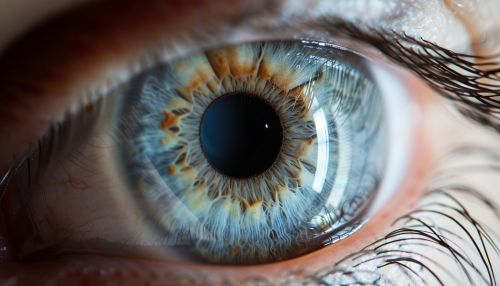Pinhole eye
Anatomy and Functionality
A pinhole eye is a type of simple eye, which, unlike complex eyes found in many animals, does not have a lens. The pinhole eye functions on the principle of a pinhole camera, where light enters through a small aperture and projects an inverted image on the retina. The smaller the aperture, the sharper the image, but the dimmer the image becomes. This is due to the decreased amount of light that can enter the eye.


Evolution and Distribution
The pinhole eye is thought to have evolved independently in several different animal lineages. It is found in a variety of marine animals, including certain species of nautilus, a type of cephalopod. The nautilus, unlike its more advanced cephalopod relatives such as the octopus and squid, has retained a pinhole eye throughout its evolutionary history. This suggests that the pinhole eye may represent an evolutionary "dead end", where further development into a more complex eye is not possible due to the constraints of the pinhole design.
Advantages and Disadvantages
The primary advantage of a pinhole eye is its simplicity. It requires fewer parts and less energy to function than a complex eye. However, this simplicity comes with several disadvantages. The most significant of these is the lack of a lens, which means that the eye cannot focus light and therefore cannot produce a sharp image. Additionally, the small aperture of the pinhole eye limits the amount of light that can enter the eye, making it less effective in low-light conditions.
Comparison with Other Eye Types
Compared to other types of eyes, the pinhole eye is relatively primitive. Complex eyes, such as those found in vertebrates and many invertebrates, have a lens that focuses light onto the retina, allowing for sharper images and better low-light vision. Compound eyes, found in many insects and crustaceans, consist of many small lenses that each capture a portion of the visual field, providing a wide field of view and excellent motion detection.
